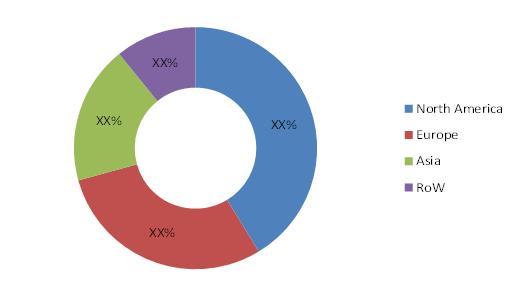Chromatography is the umbrella term for a distinct set of techniques for mixture separation. In this technique, the mixture is dissolved in a fluid, which is also known as mobile phase. Mobile phase carries the mixture through a structure that holds another mixture called as stationary phase. Different constituents of all these mixtures hasten the process of separation of the mixtures. This technique is popularly used in laboratories. Constant innovations in the market in terms of advanced designs and better performing reagents and resins are grabbing more attention of the business from around the world. Increasing demand is the biggest driver for the global chromatography reagents market.
Segmentation and Business Prospects
Considering the high growth rate in the market, the global industry for chromatography reagents has great segmentation. Major segments in the market are determined based on the types of the applications, types, bed shapes, physical state of the mobile phase and separation mechanism. Factors like types of end users and geographical location of the end users also have detailed segments. All these segments are further divided into sub-segments based on their special features and differences. Following are the details of the segmentation:
- Types: Chromatography reagents are divided into several basic types, namely, analytical, bioprocess or preparative. These basic types are divided into several sub-segments as:
- Analytical: Silylation, alkylation and esterification, acylation, ion-pairing reagents
- Preparative: Solvents, buffers and solid support (Analytical and Bio-process/Preparative)
- Bed Shape: Column and Planar chromatography reagents are the two basic types of bed shapes. Planar CRs are further divided into paper and think layer CR.
- Physical State: Based on physical states of mobile phase CR are segmented into three basic types, namely, gas, liquid and supercritical fluid. Liquid chromatography reagents are divided into HPLC, LPLC and UHPLC.
- Separation Mechanism: Based on separation mechanisms used, the market is segmented into, adsorption, affinity, ion exchange, partition and size exclusion mechanisms.
- End Users: These common laboratory techniques are largely used across different industrial verticals including government, academic, research, pharmaceutical, biotechnology, hospitals, food and beverage, cosmetics, nutraceutical, environmental and such other industries.
Drivers and Forecasting Results
Based on the geographical locations, the global chromatography reagents market is divided into four segments, namely, North America, Europe, Asia Pacific and Rest of the World. According to the conclusive study of all the aforementioned segments, the global industry is expected to witness a steady yet remarkable growth. Based on the recent findings, the CR market is expected to grow at an anticipated CAGR of 10.6%. The same rate is anticipated to continue from 2013 to 2018. Based on the given figures the market is estimated to reach past $7,609.3 million by the end of 2018. As of 2013, the market is poised at $4,598.0 million.
Increasing investments, high growth in demand and continuous technological advancements are drawing the market. Huge technological boost and increasing industrial applications are driving governments from different part of the world to make heavy investments in the market. Considering the forecasting reports, the same trend is expected to continue for the next five to six years. Hence, the market is set to make steady progress towards stability and success.
For more read here: http://mnmblog.org/proteomics-market.html



